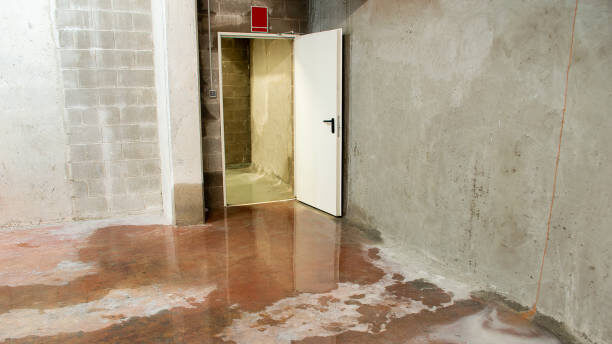Epicoccum Nigrum and Penicillium Mold: Causes, Effects, and Prevention
Epicoccum Nigrum and Penicillium mold are two common molds found in homes, workplaces, and outdoor environments. Known for their colorful appearance—ranging from yellow and orange (Epicoccum Nigrum) to blue or green (Penicillium)—both molds thrive in damp conditions and can affect indoor air quality. While Penicillium is often associated with food spoilage and allergenic reactions, Epicoccum Nigrum is more commonly found on building materials exposed to moisture. Understanding their causes, health effects, and prevention strategies is essential for keeping your home mold-free and healthy.
What Are Epicoccum Nigrum and Penicillium Mold
Epicoccum Nigrum is a saprophytic fungus that feeds on decaying organic matter. Indoors, it often grows on damp drywall, wallpaper, and wood, especially in basements and bathrooms. Its spores can survive a wide range of temperatures, making it highly adaptable.
Penicillium mold, on the other hand, appears as a blue or green fuzzy growth and spreads rapidly in cool, damp environments. It’s frequently found on water-damaged materials such as insulation, carpeting, and upholstery. Some species of Penicillium are used beneficially in antibiotics and food production, but in homes, this mold can trigger allergic reactions and respiratory discomfort.
Both molds favor environments with high humidity and poor ventilation, which is why basements are particularly vulnerable without proper waterproofing or moisture control.
Causes of Epicoccum Nigrum and Penicillium Mold Growth
Both molds rely on moisture, organic materials, and suitable temperatures to grow. Common causes include:
-
Moisture and Humidity: Persistent dampness from leaks, condensation, or high humidity is the main driver of mold growth. Basements and bathrooms often provide the perfect breeding ground.
-
Poor Ventilation: Limited airflow in enclosed areas traps moisture, encouraging molds like Epicoccum Nigrum and Penicillium to thrive.
-
Water Damage: Flooding, foundation seepage, or plumbing leaks allow water to soak into building materials, giving mold spores the moisture they need.
-
Outdoor Contamination: Spores from soil, plants, or decaying leaves can enter through windows, vents, or on clothing and pets.
-
Temperature Changes: Both molds thrive at moderate to warm indoor temperatures—particularly between 70–85°F—when humidity levels are high.
Health Effects of Epicoccum Nigrum and Penicillium Mold Exposure
Although not as dangerous as toxic black mold, both Epicoccum Nigrum and Penicillium can negatively affect indoor air quality and human health.
-
Allergic Reactions: Exposure to spores may cause sneezing, watery eyes, itchy skin, and congestion, especially in those sensitive to mold.
-
Respiratory Problems: Inhaling spores can lead to coughing, wheezing, and worsened asthma symptoms.
-
Sinus Irritation: Chronic exposure often contributes to sinus infections or inflammation.
-
Hypersensitivity Pneumonitis: Rarely, long-term exposure can cause immune system overreaction and lung inflammation.
-
Fungal Infections: For people with weakened immune systems, prolonged contact with Penicillium or Epicoccum Nigrum may result in opportunistic infections.
Preventing Epicoccum Nigrum and Penicillium Mold Growth
Controlling moisture is the key to preventing mold. Keeping your basement and home dry limits the conditions that allow Epicoccum Nigrum and Penicillium to spread. One of the most effective long-term strategies is basement waterproofing, which helps eliminate the water intrusion and dampness that mold depends on.
Here’s how to keep mold at bay:
-
Control Indoor Humidity: Maintain humidity levels below 50% using dehumidifiers—especially in basements, bathrooms, and kitchens.
-
Fix Leaks Quickly: Repair any plumbing or roof leaks immediately to prevent water from seeping into porous materials.
-
Improve Ventilation: Increase airflow with exhaust fans or ventilation systems to reduce stagnant, humid air.
-
Dry Water-Damaged Areas: After any flood or leak, dry affected areas promptly using fans and dehumidifiers.
-
Waterproof Your Basement: Proper basement waterproofing prevents groundwater seepage, condensation, and wall dampness that often cause mold. Sealing foundation cracks, installing interior or exterior drainage, and applying vapor barriers can significantly reduce mold risk.
-
Use Mold-Resistant Materials: Use mold-resistant drywall, insulation, and paint in high-moisture areas.
-
Maintain Outdoor Areas: Keep the exterior of your home clear of wet debris and ensure gutters direct water away from the foundation.
Removing Epicoccum Nigrum and Penicillium Mold
If mold appears indoors, prompt removal is vital to protect your health and prevent further spread.
-
Wear Protective Gear: Use gloves, goggles, and an N95 mask during cleanup.
-
Isolate the Area: Close off affected rooms to prevent spores from spreading.
-
Clean Non-Porous Surfaces: Use a diluted bleach solution or a mold cleaner on hard surfaces.
-
Replace Contaminated Materials: Heavily infested drywall, carpet, or insulation should be removed and replaced.
-
Seek Professional Help: For large or recurring mold problems, contact a mold remediation or waterproofing specialist to identify moisture sources and prevent future growth.
Final Thoughts
Epicoccum Nigrum and Penicillium molds are common but preventable with the right moisture control strategies. By keeping humidity low, fixing leaks promptly, and investing in basement waterproofing, homeowners can eliminate the damp environments where these molds thrive. A dry foundation not only prevents mold but also improves indoor air quality, protects your property, and creates a healthier living space for your family.



